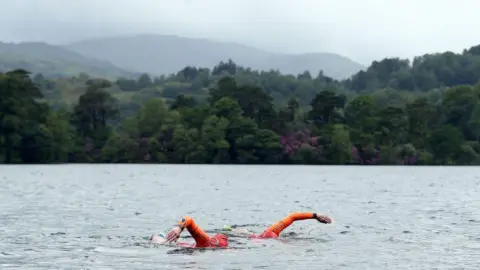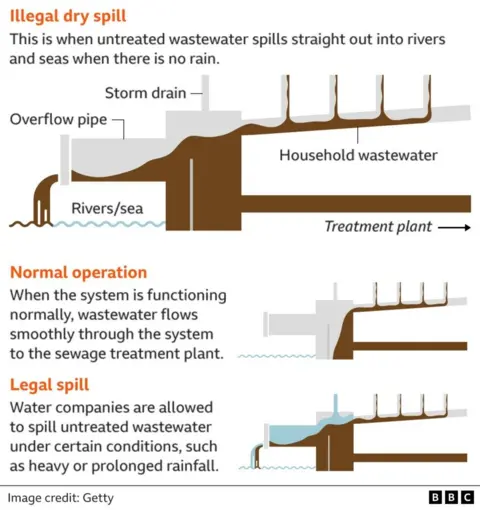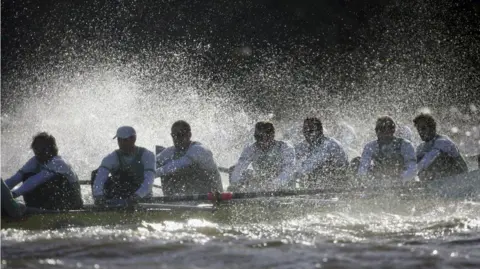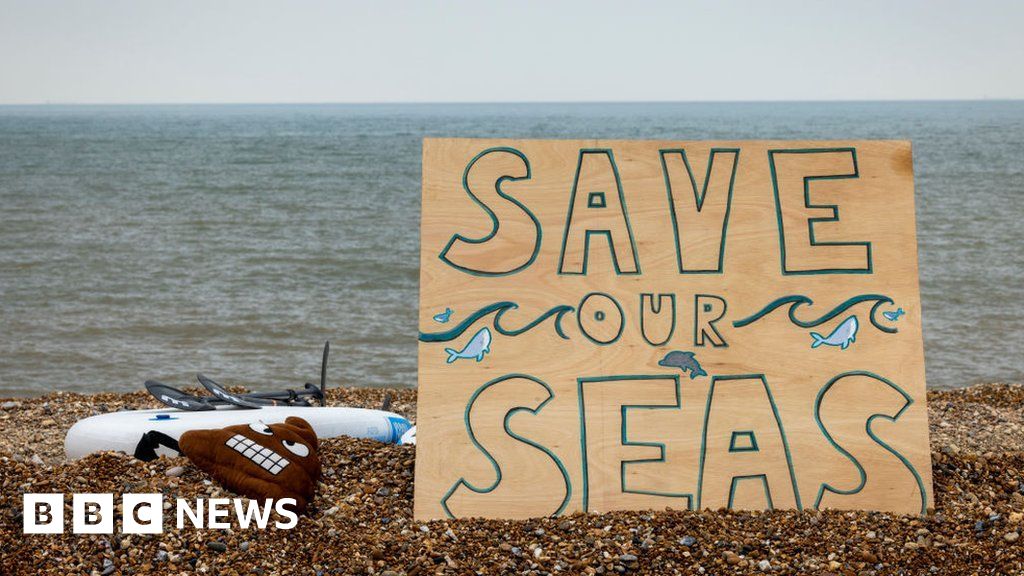 Getty Images
Getty ImagesWater companies spilled raw sewage for a record time of 3.61m hours into sea and rivers in England in 2024, according to data from the Environment Agency.
Rules allow a limited discharge of sewage in periods of excess rain, but environmental groups remain concerned that the levels post a threat to wildlife and a health risk to swimmers.
How much sewage is released into the seas and rivers in England?
Sewage spills into England’s lakes, rivers and seas by water companies increased slightly in 2024 to 3.614 million hours up from 3.606 million hours in 2023. However, the Environment Agency said that the total number of spills were down – meaning that on average spills in 2024 were longer in duration.
Water UK, the industry body for sewerage companies, has previously said spills are “unacceptable”, but that it had a plan “to end water sewage flowing into all waterways” which involved significant infrastructure upgrades.
In July data from the Environment Agency also showed that pollution incidents by water companies, which can result from spilled sewage and other contaminants, hit record levels.
Of these there were 75 serious incidents – where there is threat to aquatic and human health – and Thames Water was responsible for 33 of those.
Spill data for the devolved nations is released separately. Northern Ireland does not currently monitor real-time spills and although Scotland has made efforts to increase monitoring, it only collects data from 27% of spill sites.
In Wales, hours of spills was down in 2024 by 11%, but pollution incidents hit a ten-year high.
Why is sewage released into the sea and rivers?
Most of the UK has a combined sewerage system, meaning that both rainwater and wastewater – from toilets, bathrooms and kitchens – are carried in the same pipes.
Wastewater is usually sent to a sewage treatment works.
But capacity can sometimes be exceeded during heavy rainfall, especially if dry ground cannot quickly absorb large quantities of water.
This could lead to inundation of sewage works and potential flooding of homes, roads and open spaces.
The system is therefore designed to overflow occasionally, and discharge excess wastewater into the sea and rivers from combined sewer overflows (CSOs).
What is a dry spill and when do they occur?
According to industry regulator Ofwat, some water companies have been “routinely releasing sewage” outside times of heavy downpours, in breach of their permits – known as dry spilling. It has said this is a result of companies failing to manage their wastewater treatment plants leading to sewage overflowing into rivers and lakes before being treated.
Last year, the BBC uncovered 6,000 potential dry spills by England’s water companies in 2022.
Even if it is raining, water company permits also require them to treat a minimum amount of sewage before releasing it.

What is being done to tackle sewage discharges?
Ageing infrastructure has been identified by both the industry, government and campaigners as one of the main reasons for sewage spills.
At the end of last year Ofwat agreed that water companies in England and Wales would spend a total £104bn over the next five years to make upgrades as well as secure water supplies – £20bn of that would go specifically to tackling sewage spills.
Water UK, the industry body, said it would be the “most ambitious modernisation of sewers since the Victorian era”.
But there has been criticism from environmental campaigners that customers’ bills have had to rise significantly to help pay for a share of these changes, whilst water companies continue to pay out dividends to shareholders.
Since Labour came into government in Summer 2024 it has also announced a number of new policies:
- Restricting water company bonuses
- Launch of an Independent Water Commission chaired by former deputy Bank of England governor Sir Jon Cunliffe
- Banning wet wipes containing plastic – to reduce blockages
What are the health risks of swimming in polluted water?
 Getty Images
Getty ImagesHow can I check if the sea near me is clean?
Every week between May and September, the Environment Agency measures the water quality at bathing sites across England, and in some places it issues daily pollution risk forecasts. It is also proposing to extend the bathing season which would provide year round testing.
You can search its website by location. There are similar websites where you can find out about beaches and bathing water in Scotland, Wales or Northern Ireland.
And at the end of last year Water UK – the industry body – launched the National Storm Overflow Hub where almost real-time discharges can be seen across all of England’s overflow points. But this does not contain data on the volume of sewage discharge or the presence of organisms carrying faecal-oral disease in the water.
How clean are UK waters overall?
Sewage spills have only been routinely monitored for a few years, so it is difficult to tell exactly how they have changed over time.
However, overall water quality has been monitored for decades. This also accounts for other sources of pollution, such as agriculture.
In May 2023, the Environment Agency said that 16% of assessed surface waters in England achieved “good” ecological status, including:
- 14% of rivers and lakes
- 19% of estuaries
- 45% of coastal waters
- 93% of designated bathing waters
Water quality is generally higher in other parts of the UK.
In Scotland, around two-thirds of surface waters are classed as having “good” ecological status.
In Wales the figure is 40%, and in Northern Ireland 31%.



